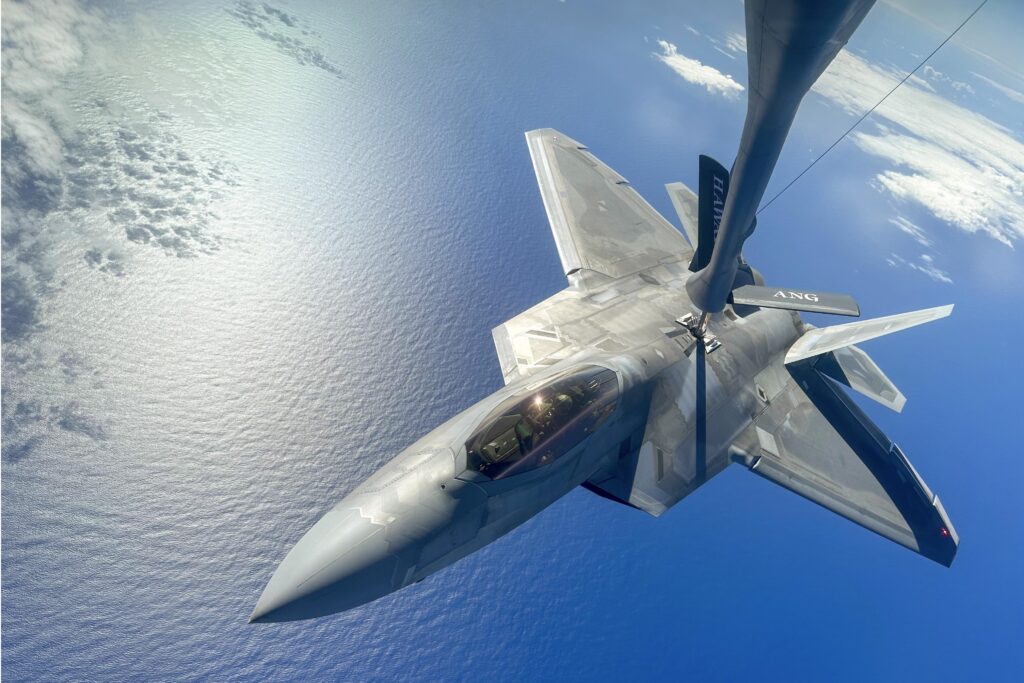
U.S. Air Force leaders unveiled an extensive effort to reshape the Air Force and Space Force to make them more competitive and capable of competing in the era of Great Power Competition. Reiterating the Biden administration’s stance of China as the “pacing challenge,” Air Force Secretary Frank Kendall repeated clearly, “we are out of time, we are out of time, we are out of time.”
The changes are intended to enable the Air Force and Space Force to respond on short notice – or no notice – to potential conflicts with countries like China or Russia. The plan involves structural and personnel changes, as well as efforts to ensure continued technological superiority.
A major component of the new initiative is the formation of an Integrated Capabilities Command, which is intended to consolidate work currently being conducted across multiple groups. The new command will specifically have its sights set on future force design and operational concepts, and it will help inform which modernization efforts are prioritized to address future threats. The move is reminiscent of the Army’s creation of Futures Command in 2018. That organization faced some growing pains, so it may take time for the Air Force to iron out the details of how its new command will function. The plan also involves the formation of a Space Futures Command, which will conduct experiments and focus on developing and validating concepts.
The Air Force will also reconfigure air wings into “Units of Action,” which are intended to be more capable of operating as self-sufficient units in austere and contested environments. New readiness standards will also be implemented for the Space Force that reflect operations under contested conditions, rather than benign environments. More attention is being placed on the critical cyber domain, and AFCYBER is being elevated to a standalone Service Component Command.
The Air Force announcement outlined 24 key changes, grouped into four main categories: Develop People, Generate Readiness, Project Power, Develop Capabilities.
Develop People
- Consolidate force development functions under an expanded Airman Development Command to provide Airmen a common, mission-focused development and training path.
- Expand technical tracks for officers and create technical tracks for enlisted Airmen; reintroduce warrant officers in IT and Cyber fields to maintain technical leadership in these highly perishable skills.
- Develop “Mission Ready Airmen” with training focused on a mix of skills needed for wartime operational mission readiness.
- Continue to transform leadership development and training at U.S. Air Force Academy, Officer Training School, and ROTC to prepare new officers to effectively lead Airmen and Guardians in the context of Great Power Competition.
- Redesign career paths to produce Guardians that meet our high-tech operational demands.
Generate Readiness
- Reorient Air Combat Command to focus on generating and presenting ready forces to combatant commanders.
- Implement large scale exercises and mission-focused training encompassing multiple operational plans to demonstrate and rehearse for complex, large-scale military operations.
- Incorporate no-notice/limited-notice operational readiness assessments and inspections in the Air Force and Space Force to reflect pacing challenge requirements.
- Restructure key processes related to aviation spares and weapons systems to be data-driven and risk-informed to improve weapon systems health.
- Implement Space Force readiness standards that reflect operations under contested conditions rather than those of a benign environment.
- Conduct a series of nested exercises in the Space Force, that increase in scope and complexity, fit within a broader Department of the Air Force-level framework, and are assessed through a Service-level, data-driven process to measure readiness.
Project Power
- Structure Air Force Operational Wings as mission-ready “Units of Action” categorized as Deployable Combat Wings, In-Place Combat Wings, or Combat Generation Wings. Each will have its own structure, with a redesigned concept of support for agile combat employment or ACE, to ensure the wings are prepared to execute their missions with assigned Airmen and units.
- Establish the relationship between Combat Wings and Base Command. Combat Wings will focus on mission level warfighting readiness and Base Commands will focus on supporting Combat Wings and operating the base in competition, crisis and conflict.
- Elevate AFCYBER to a standalone Service Component Command, reflecting the importance of the cyber mission to the Joint Force and across the Department of the Air Force.
- Formalize Space Force Combat Squadrons as Units of Action, complete activation of the remainder of Space Force Service Components and accelerate implementation of the Space Force Generation model.
Develop Capabilities
- Create a Department of the Air Force Integrated Capabilities Office to lead capability development and resource prioritization to drive Department of the Air Force modernization investments.
- Combine disparate efforts to create the Office of Competitive Activities to oversee and coordinate sensitive activities.
- Create a Program Assessment and Evaluation Office to foster structure and incorporate a more strategic and analytically based approach to resourcing decisions.
- Establish Integrated Capabilities Command to develop competitive operational concepts, integrated requirements, and prioritized modernization plans to align with force design.
- Create a new Information Dominance Systems Center within Air Force Materiel Command (AFMC) to strengthen and elevate the Air Force’s focus on Command, Control, Communications, and Battle Management; Cyber; Electronic Warfare; Information Systems; and Enterprise Digital Infrastructure.
- Strengthen the support to nuclear forces by expanding the Nuclear Weapons Center to become the Air Force Nuclear Systems Center within AFMC. This will provide comprehensive materiel support to the nuclear enterprise; establish a 2-star general officer as the Program Executive Officer for Inter-Continental Ballistic Missiles.
- Refocus the Life Cycle Management Center within AFMC as the Air Dominance Systems Center to synchronize aircraft and weapons competitive development and product support.
- Establish an Integration Development Office within AFMC to provide technology assessments and roadmaps. It will drive alignment and integration of mission systems across centers and provide technical expertise to assess operational concept feasibility.
- Create Space Futures Command, a new field command, that develops and validates concepts, conducts experimentation and wargames, and performs mission area design.
Shaun's deep-rooted interest in military equipment continues in his role as a senior defense analyst with a focus on the United States. He played an integral role in the development of Forecast International's U.S. Defense Budget Forecast, an interactive online product that tracks Pentagon acquisition programs throughout the congressional budget process. As editor of International Military Markets – North America, Shaun has cultivated a deep understanding of the vast defense markets in the United States and Canada. He is a regular contributor to Forecast International's Defense & Security Monitor blog and has co-authored white papers on global defense spending and various military programs.




